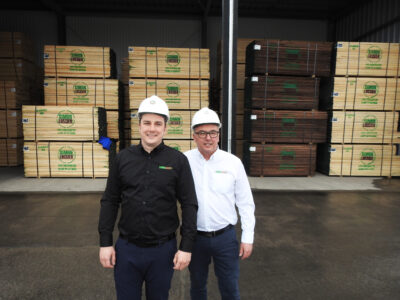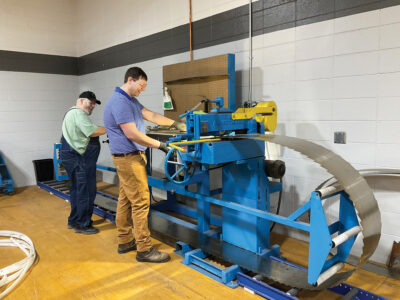Presented by the Southern Forest Products Association*
Between the housing availability crisis, global climate change and ambitious decarbonization goals, one thing remains clear. Protecting the environment for the benefit of future generations has never been more important. Building with wood is a surefire and simple strategy for reducing carbon at every stage of the supply chain. Humans have built wood structures for thousands of years. It’s a trusted building material known for its strength, durability, flexibility and aesthetic appeal. More recently, wood is again being recognized for its reputation as a sustainable building material.
Reducing Carbon Begins with Sustainable Resources
How exactly does wood reduce carbon? It begins with sustainable resources. Wood products are produced from trees, a naturally renewable resource. As trees grow, they remove and store carbon from the atmosphere. Sustainable forest management increases carbon storage capabilities by harvesting mature trees that grow slowly and replacing them with younger trees. More wood is grown each year in the U.S. than is harvested, making wood a sustainable and reliable building material that minimizes environmental impacts. Today, U.S. forests cover approximately the same amount of land as they did over 100 years ago – a commendable feat considering how much the country has evolved since the 1920s and what forests looked like 100 years ago.

Waste-Free Manufacturing
Here’s where the sustainability benefits really start to add up. Producing wood products is essentially a waste-free endeavor. Every part of the tree is used. Instead of heading to the landfill, waste material like bark, trims and sawdust is used as an energy source to help power wood production facilities. Wood products also require less energy to create than other building materials, generating fewer greenhouse gasses and using less fossil fuel during the entire manufacturing process.

Decreased Transportation Costs
Domestically-harvested and processed timber incurs a fraction of the transportation costs and environmental impacts associated with imports. Traveling down the road or across the state takes far fewer resources and much less time than shipping in timber from around the globe. Using locally sourced wood products simplifies the chain of custody, making it easier to trace building materials from the forest all the way to the finished product.
Carbon Sequestration
Building with wood products helps reduce carbon dioxide emissions through the carbon sequestration process. All wood products store carbon for the duration of their usable life – so everything from wood furniture to 2x4s to mass timber beams is a carbon sink, composed of approximately 50 percent carbon by weight.
Certified and Sustainable
Wood products are the only major building materials with third-party certifications in place to verify their origination from sustainably managed resources. Fiber sourcing systems are a popular tool that forest products companies can use to promote social responsibility, environmental stewardship and overall product sustainability.

Objective, science-based Environmental Life Cycle Assessment (LCA) studies measure wood’s environmental impacts of materials throughout the entire process, from harvest through manufacturing, transportation, installation, use, maintenance and disposal or recycling.
With validation from fiber sourcing systems, LCAs, forest management certifications and chain of custody processes, wood has proven to be a sustainable, durable and beautiful building material that stands the test of time.

* The Southern Forest Products Association (SFPA) is America’s first and oldest nonprofit Southern Pine trade association. Since 1915, SFPA has represented the Southern Pine lumber industry and is recognized as an experienced, credible resource for industry professionals. Today, SFPA is the leading source of information about Southern Pine lumber products for design-build professionals and consumers.









